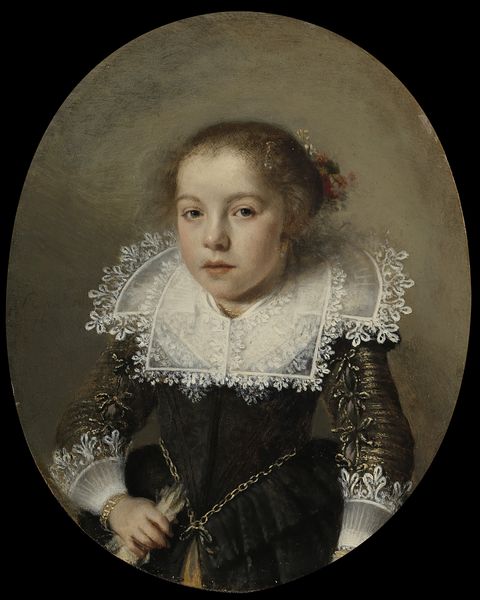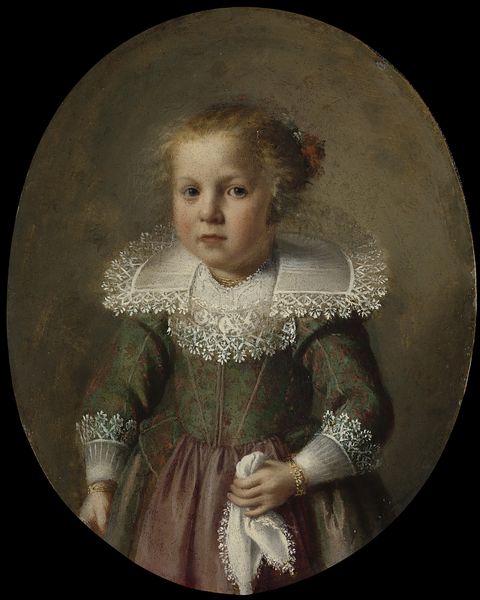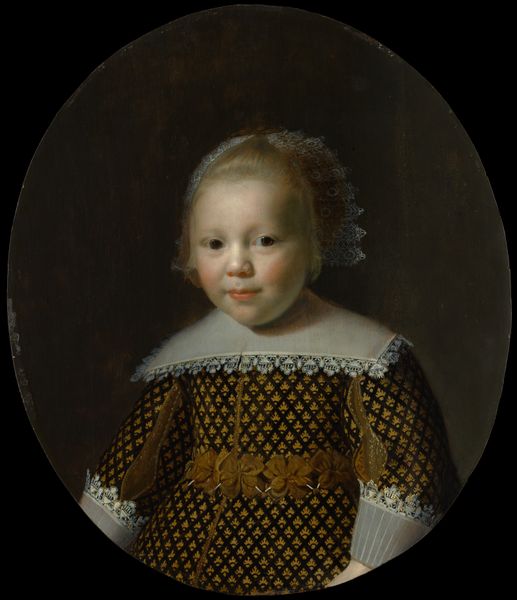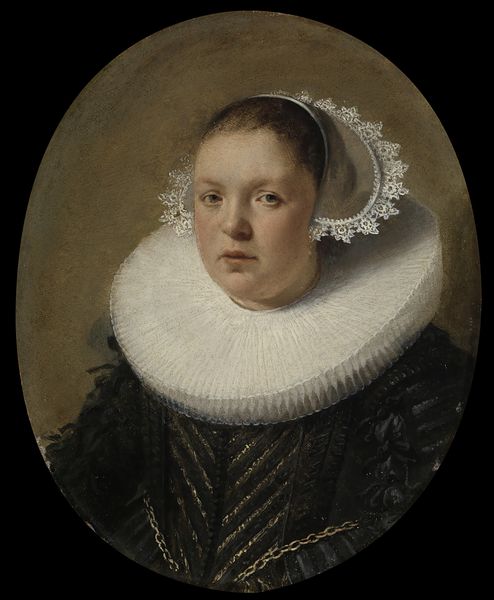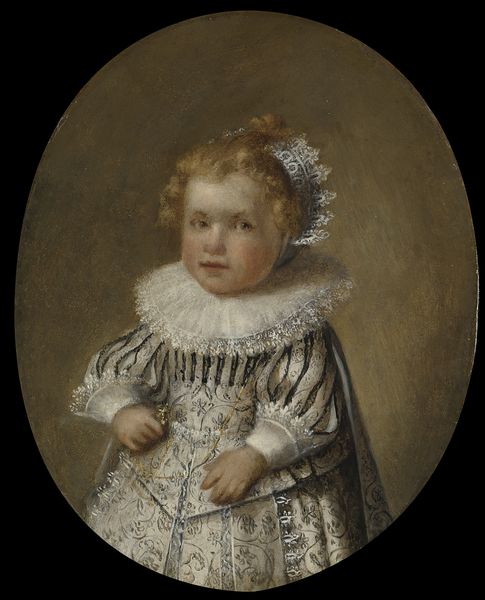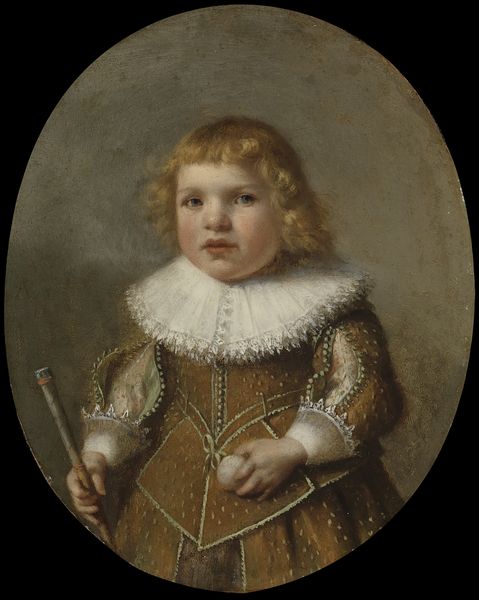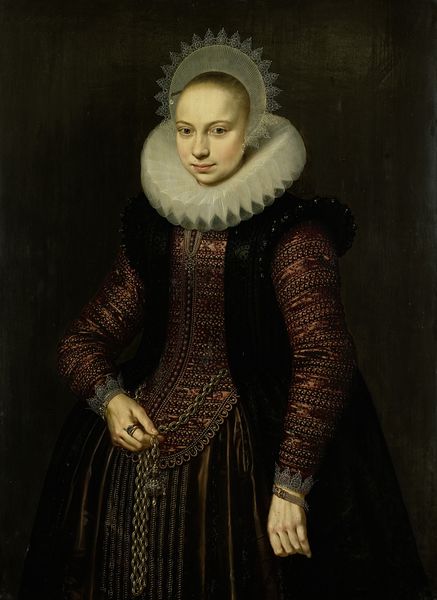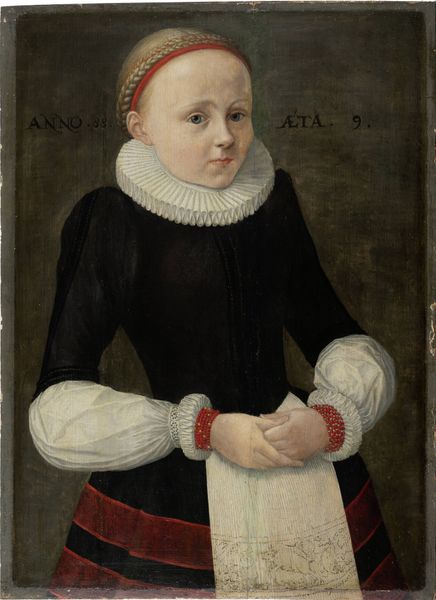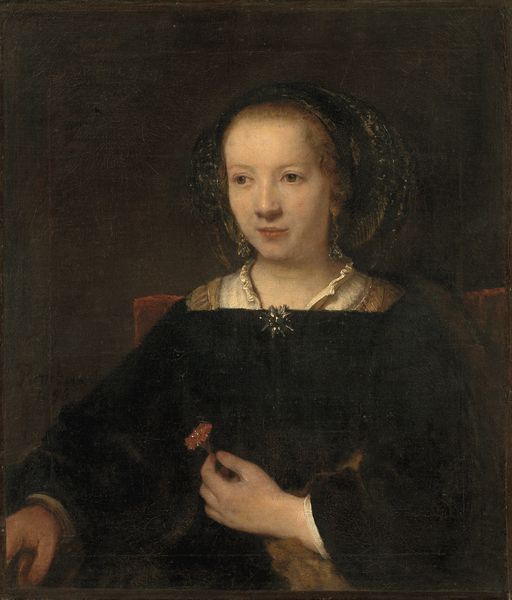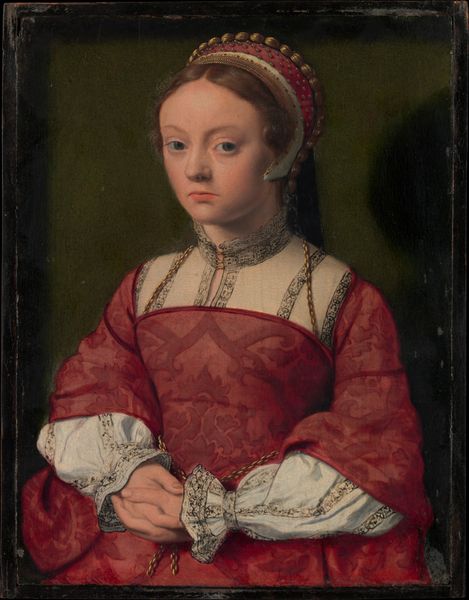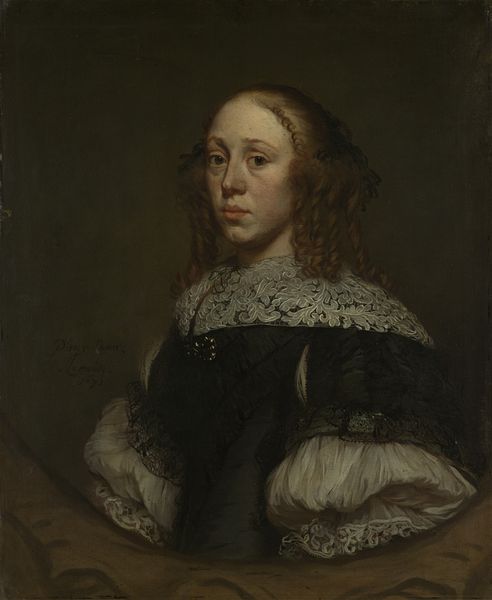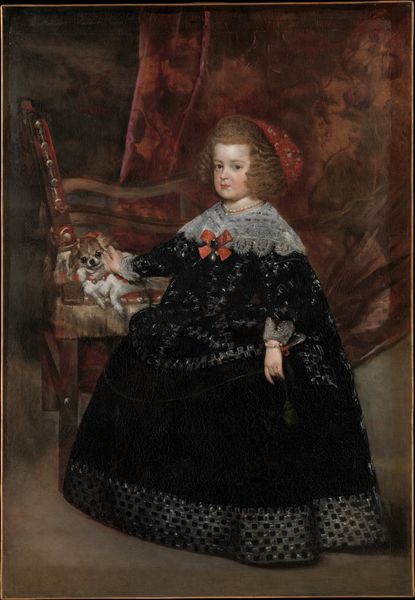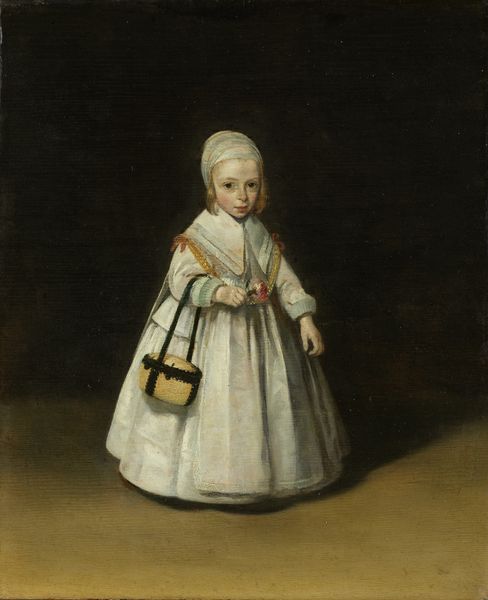
painting, oil-paint
#
portrait
#
character portrait
#
baroque
#
portrait image
#
dutch-golden-age
#
painting
#
oil-paint
#
portrait reference
#
portrait head and shoulder
#
mid-section and head portrait
#
genre-painting
Dimensions: support height 15.9 cm, support width 12.8 cm
Copyright: Rijks Museum: Open Domain
Editor: So, this is *Portrait of Maria Cornelisdr van Esch*, an oil painting from 1632. What strikes me immediately is how serious this little girl looks. It’s a far cry from the cherubic images we often associate with childhood. What do you make of it? Curator: It’s a poignant image, isn’t it? Looking at Maria through a contemporary lens, we can’t ignore the implications of representing a child with such formality and gravity. In Dutch Golden Age portraiture, particularly among the elite, such portraits served a purpose. How do you think it intersects with social and economic power structures? Editor: Well, the fine lace, the jewelry – it all speaks of wealth, of course. Almost like a miniature adult, performing her family’s status. Curator: Precisely. It's not just a depiction; it's a construction of identity rooted in privilege. The artist is carefully crafting an image, reflecting not only Maria's likeness but her position within a patriarchal, class-based society. We should consider how gender and age intersect to define Maria’s role. What future is already mapped out for her? Editor: It makes you wonder about her lived experience. Was this portrait a way of silencing her, molding her into a passive representation of her family's ambition? Curator: That’s an insightful question. And while we cannot know for sure Maria's inner life, acknowledging the power dynamics embedded in this seemingly simple portrait allows us to challenge conventional readings and foster a more critical dialogue with the past. The work reflects on status. Editor: Thinking about the broader implications makes the portrait so much more complex and meaningful. I appreciate your perspective! Curator: And I value your openness to challenging the historical narrative. This exchange helps make connections between art history and the important social questions of today.
Comments
No comments
Be the first to comment and join the conversation on the ultimate creative platform.
